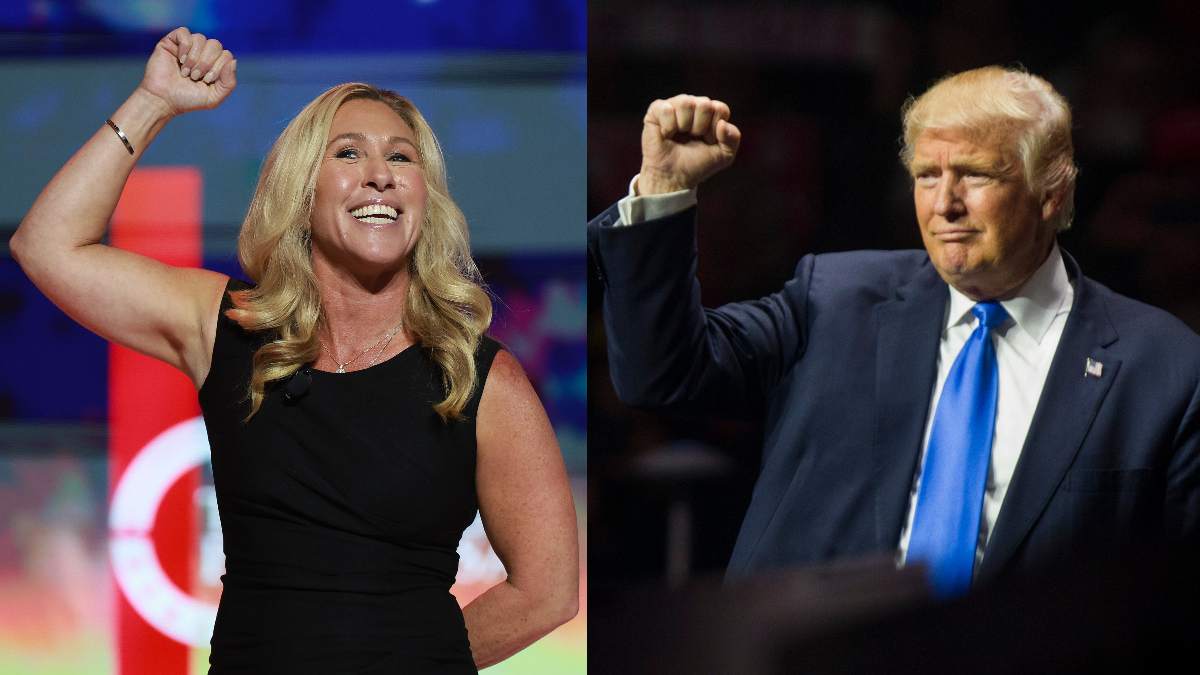Trump Meeting Strategies: Winning And Losing Tactics

Table of Contents
Winning Tactics Employed by Trump in Meetings
Trump's meeting strategies are characterized by an aggressive, high-pressure approach designed to achieve maximum leverage. Understanding these tactics can provide valuable lessons for improving your own negotiation skills.
The Art of the Deal: High-Pressure Negotiation
Trump’s negotiation style is often described as "the art of the deal," a high-pressure approach focused on leveraging power dynamics to secure favorable outcomes. This approach, honed over decades in real estate and business, is characterized by:
- Setting ambitious goals: Trump famously sets extremely ambitious goals, often exceeding what others deem realistic. This sets a high bar and pushes negotiators to find creative solutions.
- Using strong opening statements: He frequently begins negotiations with bold, confident statements, aiming to establish immediate dominance.
- Employing a "win-at-all-costs" mentality: Trump’s approach is often uncompromising, prioritizing victory above all else. This can be both a strength and a weakness, as we’ll see later.
- Mastering the art of the counteroffer: He’s adept at using counteroffers not just to adjust terms, but also to shift the momentum and put pressure on the other party.
His business dealings, particularly his numerous real estate transactions, are replete with examples of this aggressive negotiating style. His political career further showcases this approach, evident in his often confrontational interactions with world leaders and opponents.
Mastering the Power of Persuasion
Beyond aggressive negotiation, Trump effectively utilizes persuasion techniques to influence others during meetings. His charisma and command of language are key components:
- Using simple, memorable language: Trump employs simple, often repetitive language, making his messages easily digestible and memorable.
- Repeating key messages: He frequently reiterates key points, reinforcing his message and ensuring it resonates with the audience.
- Projecting confidence and dominance: His body language, often assertive and expansive, projects an image of strength and authority.
- Connecting with the emotional side of the audience: He appeals to the emotions of his audience, employing strong rhetoric and powerful imagery to sway opinions.
Analyzing his speeches and televised interviews reveals the strategic deployment of these persuasion techniques. His ability to connect with voters on an emotional level, despite often controversial statements, highlights the potency of this approach.
Strategic Use of Media and Public Opinion
Trump expertly leverages media appearances and social media to shape public perception before and after meetings, influencing the negotiation landscape:
- Pre-meeting media campaigns to set the stage: He often uses media appearances to frame the upcoming negotiation in his favor, shaping public opinion and exerting pressure on his opponents.
- Post-meeting announcements to influence the narrative: He strategically controls the information flow after meetings, using press conferences and social media to present his version of events and consolidate his position.
- Using social media to control the information flow: Twitter, in particular, has been a powerful tool for him to directly communicate with the public and circumvent traditional media outlets.
This strategic use of media transforms the negotiation landscape, turning public opinion into a powerful weapon in his arsenal.
Losing Tactics and What to Avoid
While Trump's aggressive style yields successes, certain tactics have demonstrably led to setbacks. Understanding these pitfalls is crucial for effective negotiation.
The Pitfalls of Arrogance and Dismissiveness
Trump's arrogance and dismissiveness have often undermined his negotiating positions. Active listening and empathy are essential skills often lacking in his approach:
- Interrupting others frequently: His tendency to interrupt demonstrates a lack of respect for opposing viewpoints and hinders productive dialogue.
- Failing to acknowledge opposing viewpoints: Dismissing the concerns of others prevents the building of trust and the exploration of mutually beneficial solutions.
- Coming across as condescending or disrespectful: Such behavior alienates potential allies and solidifies opposition.
These instances highlight the importance of respectful communication and the dangers of excessive self-confidence.
Underestimating Opponents and Lack of Preparation
Insufficient preparation and underestimating opponents have led to significant setbacks for Trump. Thorough research and strategic planning are indispensable:
- Insufficient research on opponents' positions: A lack of thorough understanding of the opposing side’s goals and strategies weakens negotiating power.
- Poorly defined goals and strategies: Without clearly defined objectives and a flexible plan, negotiations become reactive rather than proactive.
- Lack of contingency planning: Failure to anticipate and prepare for potential setbacks leaves negotiators vulnerable and unprepared.
This emphasizes the importance of meticulous preparation, thorough research, and the ability to adapt to changing circumstances.
The Dangers of Inflexibility
Trump's often rigid stance and unwillingness to compromise have resulted in failed negotiations. Adaptability and a willingness to find common ground are key to success:
- Refusal to consider alternative solutions: Inflexibility limits the potential for creative solutions and mutually beneficial outcomes.
- Sticking rigidly to initial demands: An unwavering commitment to initial positions can prevent reaching agreements that might be more advantageous in the long run.
- Inability to build rapport or trust: A confrontational approach makes it difficult to build relationships and establish trust, which are essential for successful negotiations.
Conclusion
Mastering Trump meeting strategies requires a careful analysis of both his successes and failures. His aggressive negotiation style, coupled with his strategic use of media and persuasive communication, has yielded significant results. However, his arrogance, dismissiveness, lack of preparation, and inflexibility have also resulted in setbacks. Understanding both the winning and losing tactics employed by Trump provides valuable lessons for anyone aiming to improve their own negotiation skills and overall meeting effectiveness. By learning to adapt these elements to your own situations, while avoiding the pitfalls, you can craft a more effective and successful approach to your meetings and negotiations. Further research into negotiation techniques and leadership styles will further enhance your understanding of these complex dynamics. Mastering Trump meeting strategies is not about imitation, but about understanding and adapting the principles to your own context for optimal results.

Featured Posts
-
 Amanda Holdens Response To The Buzz Following Her Divorce From Les Dennis
May 06, 2025
Amanda Holdens Response To The Buzz Following Her Divorce From Les Dennis
May 06, 2025 -
 Mindy Kalings Peplum Choice For Hollywood Honor
May 06, 2025
Mindy Kalings Peplum Choice For Hollywood Honor
May 06, 2025 -
 Gypsy Rose Blanchard And Life After Lock Up Season 2 Cast Release Date Details
May 06, 2025
Gypsy Rose Blanchard And Life After Lock Up Season 2 Cast Release Date Details
May 06, 2025 -
 Surprisingly Good Cheap Finds
May 06, 2025
Surprisingly Good Cheap Finds
May 06, 2025 -
 Gazze Ye Yardim Malzemesi Tasiyan Tirlar Sinira Ulasti
May 06, 2025
Gazze Ye Yardim Malzemesi Tasiyan Tirlar Sinira Ulasti
May 06, 2025
